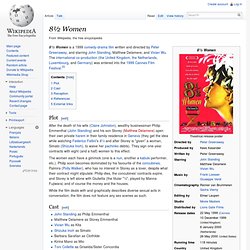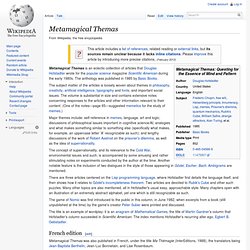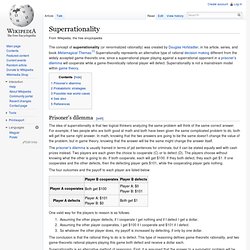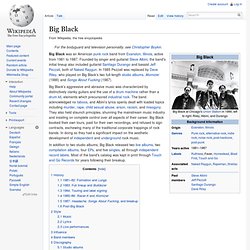

Sarahsays. 8½ Women. 8½ Women is a 1999 comedy-drama film written and directed by Peter Greenaway, and starring John Standing, Matthew Delamere, and Vivian Wu.

The international co-production (the United Kingdom, the Netherlands, Luxembourg, and Germany) was entered into the 1999 Cannes Film Festival.[2] Plot[edit] After the death of his wife (Claire Johnston), wealthy businessman Philip Emmenthal (John Standing) and his son Storey (Matthew Delamere) open their own private harem in their family residence in Geneva (they get the idea while watching Federico Fellini's 8½ and after Storey is "given" a woman, Simato (Shizuka Inoh), to waive her pachinko debts). They sign one-year contracts with eight (and a half) women to this effect. The women each have a gimmick (one is a nun, another a kabuki performer, etc.). While the film deals with and graphically describes diverse sexual acts in conversation, the film does not feature any sex scenes as such. Cast[edit] Demiurge. In the Platonic, Neopythagorean, Middle Platonic, and Neoplatonic schools of philosophy, the demiurge (/ˈdɛmiˌɜrdʒ/) is an artisan-like figure responsible for the fashioning and maintenance of the physical universe.

The term was subsequently adopted by the Gnostics. Although a fashioner, the demiurge is not necessarily the same as the creator figure in the familiar monotheistic sense, because both the demiurge itself plus the material from which the demiurge fashions the universe are considered either uncreated and eternal, or the product of some other being, depending on the system. Math Tricks and the Joy of Math I The Great Courses. Nash equilibria: strategies in the Prisoner's Dilemma. Game Theory and Prisoner's Dilemma: Determining Payoffs from Decision Making І The Great Courses.
Game Theory - The Epilogue. Game Theory pt3. Game Theory pt2. Metamagical Themas. Metamagical Themas is an eclectic collection of articles that Douglas Hofstadter wrote for the popular science magazine Scientific American during the early 1980s.

The anthology was published in 1985 by Basic Books. The subject matter of the articles is loosely woven about themes in philosophy, creativity, artificial intelligence, typography and fonts, and important social issues. The volume is substantial in size and contains extensive notes concerning responses to the articles and other information relevant to their content. Superrationality. The concept of superrationality (or renormalized rationality) was created by Douglas Hofstadter, in his article, series, and book Metamagical Themas.[1] Superrationality represents an alternative type of rational decision making different from the widely accepted game-theoretic one, since a superrational player playing against a superrational opponent in a prisoner's dilemma will cooperate while a game-theoretically rational player will defect.

Superrationality is not a mainstream model within game theory. Prisoner's dilemma[edit] The idea of superrationality is that two logical thinkers analyzing the same problem will think of the same correct answer. For example, if two people who are both good at math and both have been given the same complicated problem to do, both will get the same right answer. The prisoner's dilemma is usually framed in terms of jail sentences for criminals, but it can be stated equally well with cash prizes instead. Reciprocal altruism. Diagram showing reciprocal altruism In evolutionary biology, reciprocal altruism is a behaviour whereby an organism acts in a manner that temporarily reduces its fitness while increasing another organism's fitness, with the expectation that the other organism will act in a similar manner at a later time.

The concept was initially developed by Robert Trivers to explain the evolution of cooperation as instances of mutually altruistic acts. The concept is close to the strategy of "tit for tat" used in game theory. Prisoner's dilemma. The prisoners' dilemma is a canonical example of a game analyzed in game theory that shows why two individuals might not cooperate, even if it appears that it is in their best interests to do so.
It was originally framed by Merrill Flood and Melvin Dresher working at RAND in 1950. Albert W. Tucker formalized the game with prison sentence rewards and gave it the name "prisoner's dilemma" (Poundstone, 1992), presenting it as follows: Two members of a criminal gang are arrested and imprisoned. Each prisoner is in solitary confinement with no means of speaking to or exchanging messages with the other. It's implied that the prisoners will have no opportunity to reward or punish their partner other than the prison sentences they get, and that their decision won't affect their reputation in future. The prisoner's dilemma game can be used as a model for many real world situations involving cooperative behaviour.
Game theory. Game theory is the study of strategic decision making.

Specifically, it is "the study of mathematical models of conflict and cooperation between intelligent rational decision-makers. "[1] An alternative term suggested "as a more descriptive name for the discipline" is interactive decision theory.[2] Game theory is mainly used in economics, political science, and psychology, as well as logic, computer science, and biology. The subject first addressed zero-sum games, such that one person's gains exactly equal net losses of the other participant or participants. Tit for tat. In Western business cultures, a handshake when meeting someone is an example of initial cooperation.

Tit for tat is an English saying meaning "equivalent retaliation". It is also a highly effective strategy in game theory for the iterated prisoner's dilemma. The strategy was first introduced by Anatol Rapoport in Robert Axelrod's two tournaments,[1] held around 1980. Loading... AqME - En l'honneur de Jupiter. Coal Chamber Interview: Soundwave TV 2012. Soundwave - Coal Chamber.
Coal Chamber - Soundwave 2012 - Brisbane - Loco. The Pillow Book (film) The Pillow Book is a 1996 film by British director Peter Greenaway, which stars Vivian Wu as Nagiko, a Japanese model in search of pleasure and new cultural experience from various lovers.

The film is a rich and artistic melding of dark modern drama with idealized Chinese and Japanese cultural themes and settings, and centers around body painting. It co-stars Ewan McGregor as Jerome, an English translator who becomes Nagiko's favourite lover. Backstage At Soundwave Sydney: Soundwave TV. Game Theory pt1. Hellyeah Interview: Soundwave TV.
Spark TV: Project Indie. Science news and science jobs from New Scientist. Third Worlds - Death Grips. National Geographic - Inspiring People to Care About the Planet Since 1888. The Definitive Guide to Enlightening Information. Yogis Of Tibet (2002)- Full Movie. "Solipsist" Official Trailer. Big Black. Big Black's aggressive and abrasive music was characterized by distinctively clanky guitars and the use of a drum machine rather than a drum kit, elements which precursored industrial rock.

The band acknowledged no taboos, and Albini's lyrics openly dealt with loaded topics including murder, rape, child sexual abuse, arson, racism, and misogyny. They also held staunch principles, shunning the mainstream music industry and insisting on complete control over all aspects of their career. Big Black booked their own tours, paid for their own recordings, and refused to sign contracts, eschewing many of the traditional corporate trappings of rock bands. In doing so they had a significant impact on the aesthetic development of independent and underground rock music.
History[edit] 1981–82: Formation and Lungs[edit] Shellac (band) Shellac (sometimes referred to as Shellac of North America) is an American group composed of Steve Albini (guitar and vocals), Bob Weston (bass guitar and vocals) and Todd Trainer (drums and vocals).

Although they have been classified as post-hardcore[1][2] they describe themselves as a "minimalist rock trio. " Shellac formed in Chicago, Illinois, in 1992 as an informal collaboration between guitarist Steve Albini and drummer Todd Trainer. Former Naked Raygun bassist Camilo Gonzalez sat in on early rehearsals and played on one song on Shellac's first single before permanent bassist Bob Weston, formerly of Boston's Volcano Suns, joined.
Shellac has a distinctive, minimalist sound based on unusual and urgent time signatures, repetitive heavy rhythms, an angular guitar sound, and both Albini's and Weston's surreal, bitingly sarcastic lyrics. Both Weston and Albini are recording engineers. Shellac posing at Shibuya, Japan. Steve Albini. Early life[edit] Albini was born in Pasadena, California, the son of Gina Albini (née Martinelli) and Frank Addison Albini, a wildlife researcher.[2][3] Albini has a brother and sister.[4] He is Italian American, with part of his family coming from the Piedmont region of Italy.[5] In his youth, Albini's family moved often, before settling in Missoula, Montana in 1974. Albini said that growing up in Montana affected his taste. Sylvia Massy. History[edit] From Green Jellÿ to Tool[edit] During the early 1990s, Massy was working on a project with Green Jellÿ when one of the members of that band invited Massy to produce a fledgling band known as Tool.
Rubin and Beyond[edit] Current status[edit] Massy lives in Weed, California. Fuel my Fire. TOOL- In The Studio Circa 1992. The Sound Of Animals Fighting - We Must Become The Change We Want To See (Full) Deftones - TV special 1998 [Part 3 of 3] Deftones - TV special 1998 [Part 2 of 3] Mesopotamia Black Light Burns. Deftones - TV special 1998 [Part 1 of 3] Mesopotamia Black Light Burns. Black Light Burns 4 walls. Black Light Burns - "Lie" I Am: Wolfpack. Matt Embree discussing Kurt Vonnegut. Deftones - Reading Festival 2011 Highlights [HQ] Omar Rodriguez Lopez - Miercoles. Omar Rodriguez Lopez - Miercoles.